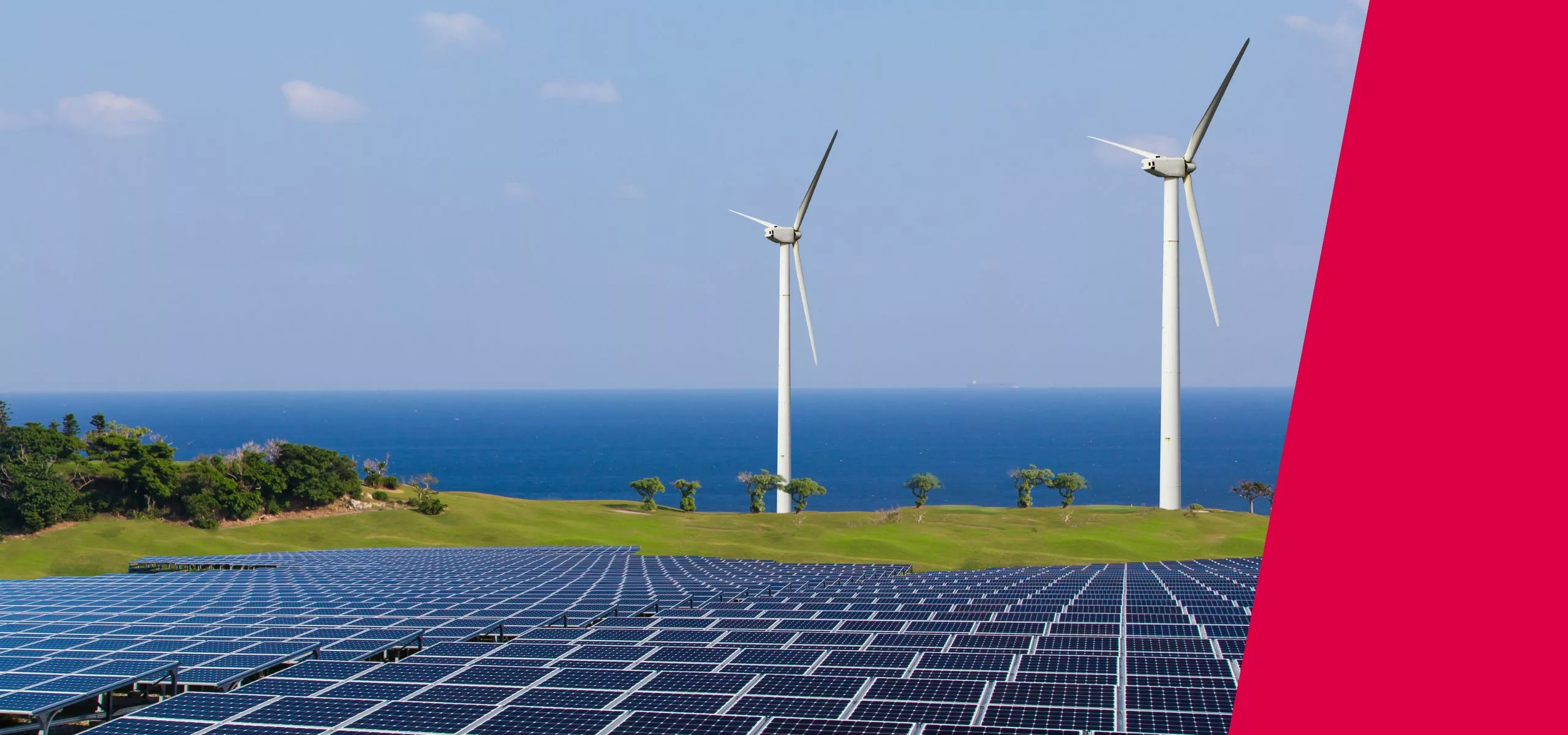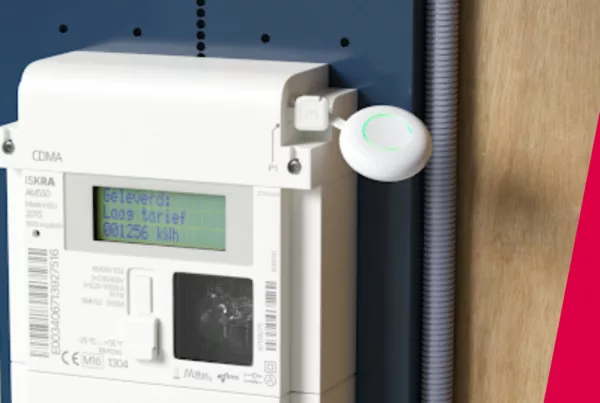Key Trends Shaping the Sustainable Energy Transition
The shift toward sustainable energy is accelerating, driven by technological innovation, economic incentives, and the urgent need to protect our planet. Key trends are reshaping the energy landscape, with Virtual Power Plants (VPPs), Distributed Energy Resources (DERs), demand response, and frequency response playing central roles. This article explores these trends, highlighting the critical role Internet of Things (IoT) solutions play in accelerating the energy transition.
1. Decentralisation of Energy Generation
The traditional model of centralised energy generation is transforming into a decentralised system with a significant role for Distributed Energy Resources (DERs) such as solar panels, wind turbines, and small-scale biogas units. The shift toward DERs reduces transmission losses and enhances grid resilience by diversifying energy sources.

2. Virtual Power Plants (VPPs)
VPPs are pivotal in managing this decentralised infrastructure. VPPs aggregate DERs to function collectively as a single power plant, enhancing electricity generation and consumption across the grid. According to the International Renewable Energy Agency (IRENA), VPPs can improve grid stability and integrate a higher share of renewables by providing flexible, distributed generation and storage capabilities.
IoT solutions are critical in managing VPPs, providing real-time data and analytics to ensure efficient operation and maximum utilisation of distributed assets. EpiSensor’s advanced demand response IoT infrastructure supports VPPs, enabling seamless integration and control of DERs. These DERs can exist across multiple locations, such as in this Gogoro Enel X EV charging programme, where EpiSensor technology is connecting 2,500 Gogoro GoStations (battery swapping stations for E-Scooters) to the Enel X VPP.
3. The Rise of Energy Storage
Energy storage systems, particularly lithium-ion batteries, have experienced dramatic cost reductions, leading to a surge in installed capacity. Lithium-ion battery costs have decreased by nearly 90% over the past decade, according to BloombergNEF. This decline has been a game-changer for the viability of renewable energy, mitigating the intermittency of sources like solar and wind.

The reduction in battery costs, combined with improvements in technology, has facilitated the integration of large-scale storage solutions. IoT technology is essential for managing these systems, optimising charge and discharge cycles, and predicting usage patterns. EpiSensor’s IoT solutions enable efficient operation and integration of energy storage systems, enhancing overall energy management.
4. Demand Response and Dynamic Pricing
Demand response, where consumers adjust their energy usage based on supply conditions and dynamic pricing, is increasingly crucial for grid stability and efficiency. Dynamic pricing models, which reflect real-time electricity costs, incentivise consumers to shift their usage to off-peak times. These financial incentives drive commercial and industrial energy consumers towards demand response as a way to reduce energy costs, enhance sustainability efforts, and comply with regulations such as the EU CSRD.
The Brattle Group’s May 2024 report highlights how demand response can reduce costs and improve grid reliability by balancing supply and demand more effectively. IoT solutions play a vital role in implementing these models by providing the necessary data and control mechanisms. EpiSensor’s award-winning demand response infrastructure enables businesses to dynamically adjust their energy consumption, participate in demand response programs, and optimise energy costs. You can read about how demand response is transforming energy consumption and efficiency at Ireland’s largest airport, Dublin Airport, here.
5. Integration of Electric Vehicles (EVs)
Electric vehicles (EVs) are becoming integral to the energy ecosystem, serving both as consumers and mobile energy storage units. Vehicle-to-Grid (V2G) technology allows EVs to discharge power back into the grid, supporting demand and stabilising the grid during peak times.
A recent report by the International Council on Clean Transportation (ICCT) and the Regulatory Assistance Project discusses the rapid growth of EVs and their potential for grid integration. According to the report: “Smart charging is a key tool to reduce the consumption of fossil-powered electricity and integrate more variable renewables into the grid by charging EVs when there is sufficient renewable energy available. In doing so, smart charging can maximise carbon emission reductions and reduce the need for costly and unnecessary upgrades of the power grid.”
IoT solutions are crucial in managing the interaction between EVs and the grid, optimising charging and discharging processes. EpiSensor’s IoT infrastructure supports V2G technology, enhancing the efficiency and reliability of energy systems.
6. Constraints on Human Skills and System Design
A significant challenge in the transition to sustainable energy is the constraint on human skills. The complexity of modern energy systems often requires specialised knowledge, creating barriers for many organisations, and highlighting the talent shortage in energy transformation. Designing systems that are easier to use, automatically configure themselves, and work around skills shortages is essential.
The World Economic Forum emphasises the growing skills gap in the energy sector and the need for automation and user-friendly technologies. EpiSensor addresses this challenge by producing IoT solutions that simplify energy management, making it accessible to a broader range of users. Our systems are designed to minimise the need for technical expertise, reducing the burden on skilled personnel and accelerating the adoption of advanced energy management practices.
Find out why market leaders choose to partner with EpiSensor
Learn more about the features and benefits of EpiSensor’s award-winning systems.
7. The Explosive Growth of Renewables and Storage
The cost of solar photovoltaic (PV) panels has plummeted by over 80% in the past decade, leading to a dramatic increase in installed capacity. This economic shift, combined with the reduction in battery storage costs, is driving unprecedented growth in renewable energy and storage installations.

A study by the International Renewable Energy Agency (IRENA) highlights the sharp decline in renewable energy costs and the resulting expansion in capacity. IoT solutions are essential for managing this growth, providing real-time monitoring, predictive analytics, and automated control. EpiSensor’s technology supports the integration and utilisation of renewable energy, enhancing the efficiency and reliability of building energy systems, a topic we recently explored in a recent article for Building Services Engineeering magazine.
8. The IEA’s Underestimation of Renewable Growth
The International Energy Agency (IEA) has consistently underestimated the growth of renewables and energy storage in its forecasts. Actual deployment rates have often far exceeded IEA predictions, demonstrating the rapid pace of technological advancement and adoption of renewables.
A review by Nature Energy discusses how the IEA’s forecasts have underestimated the potential for renewable energy growth and the adoption of storage technologies. IoT technology has been a significant enabler of this growth, providing the tools needed to manage and optimise renewable energy systems. EpiSensor’s IoT solutions contribute to this trend by offering the data and capabilities required to harness the full potential of renewable energy sources.
9. Frequency Response and Grid Stability
Maintaining grid stability through frequency response has become increasingly important with the rise of renewable energy. Traditional power plants help stabilise grid frequency by maintaining a steady energy flow, however renewable sources often lack this capability. IoT-enabled solutions, such as EpiSensor, can manage frequency response by adjusting the output of distributed resources and storage systems in real-time, enhancing grid stability and enabling grids to integrate further renewable energy sources.

The Role of IoT in the Energy Transition
IoT provides the data, connectivity, and intelligence needed to i>ntegrate and manage diverse energy sources, optimise storage, facilitate demand response, and enhance grid stability. The trends discussed further demonstrate the indispensable role of IoT technology in accelerating the energy transition.
At EpiSensor, we are committed to driving innovation in IoT to support this transition. Our solutions are designed to simplify energy management and empower our partners to overcome skill constraints and capitalise on the economic and environmental advantages of renewable energy and storage. By maximising the value of IoT technology, we can build a more resilient, efficient, and sustainable energy future for all.
”EpiSensor's technology is fantastic. It's reliable, easy to deploy - and integrates seamlessly with our systems. Their team's flexible and fast - they help us navigate our way and develop, design, and deliver solutions. I don't think anyone could match EpiSensor's speed.
Paul Moloney, Contracts Manager (Energy Markets & Hubgrade)Veolia
Keen to hear more about our Partner Programme?
Collaborate with a partner that will help you build energy services at scale.



